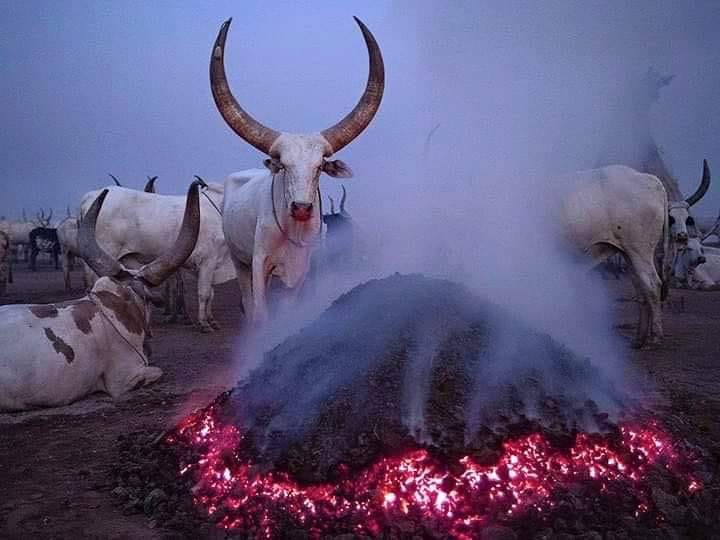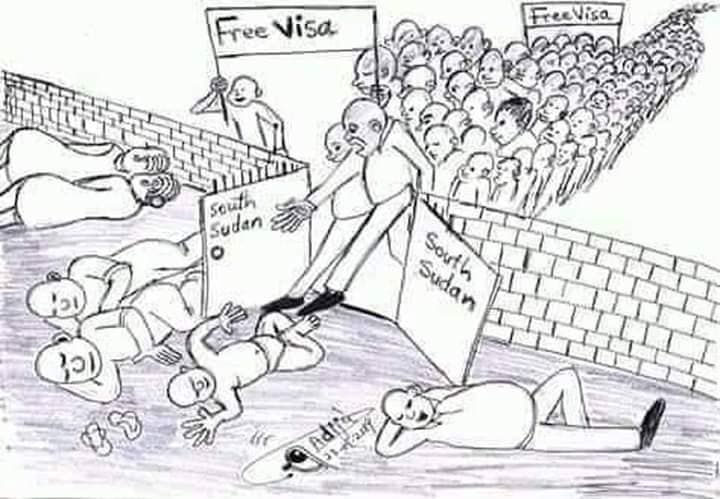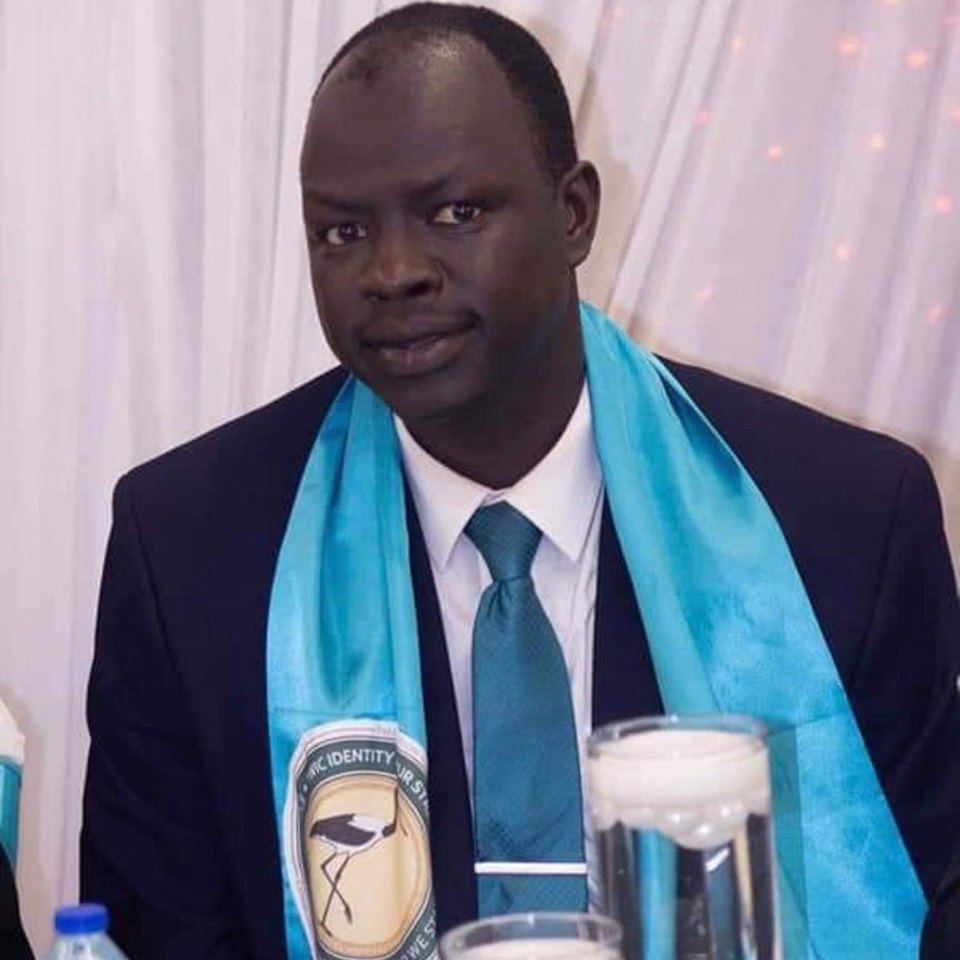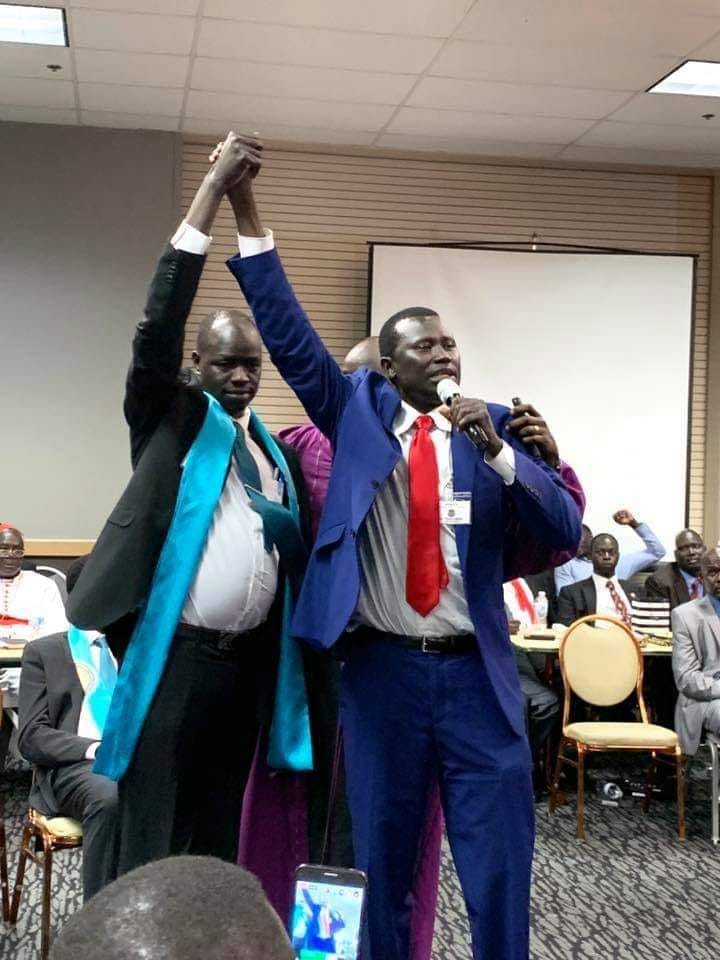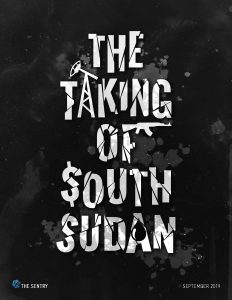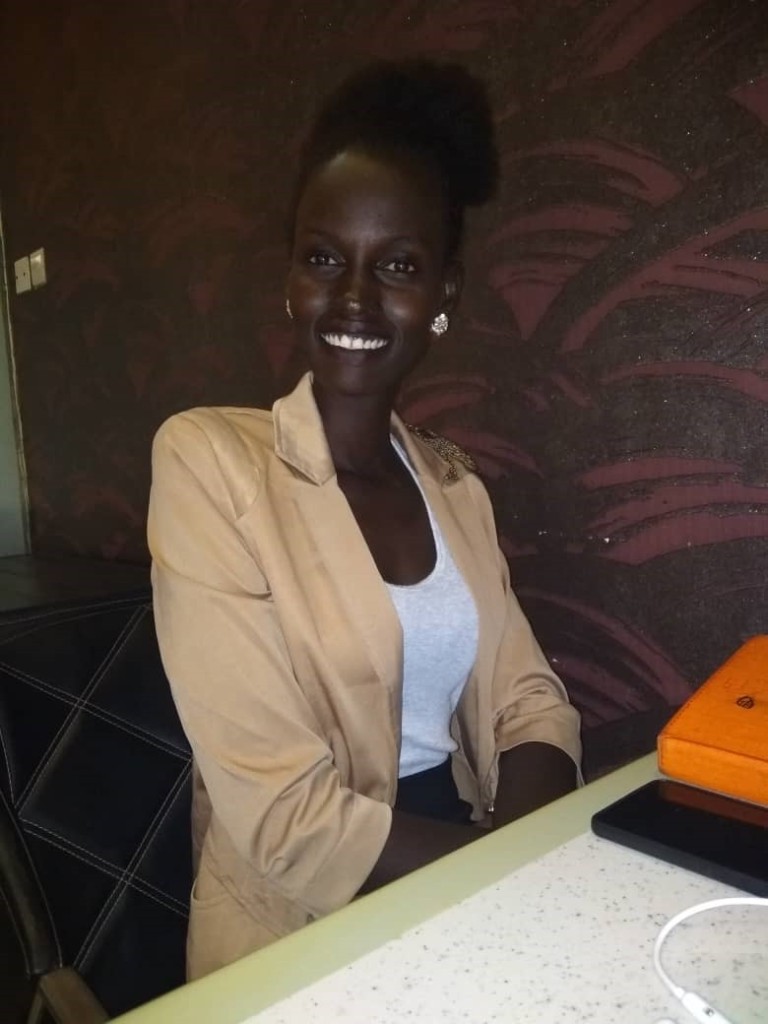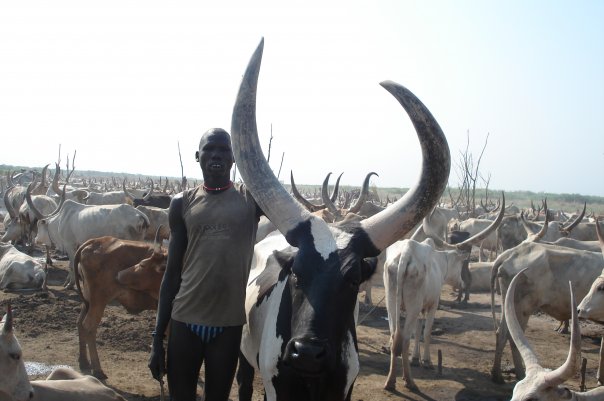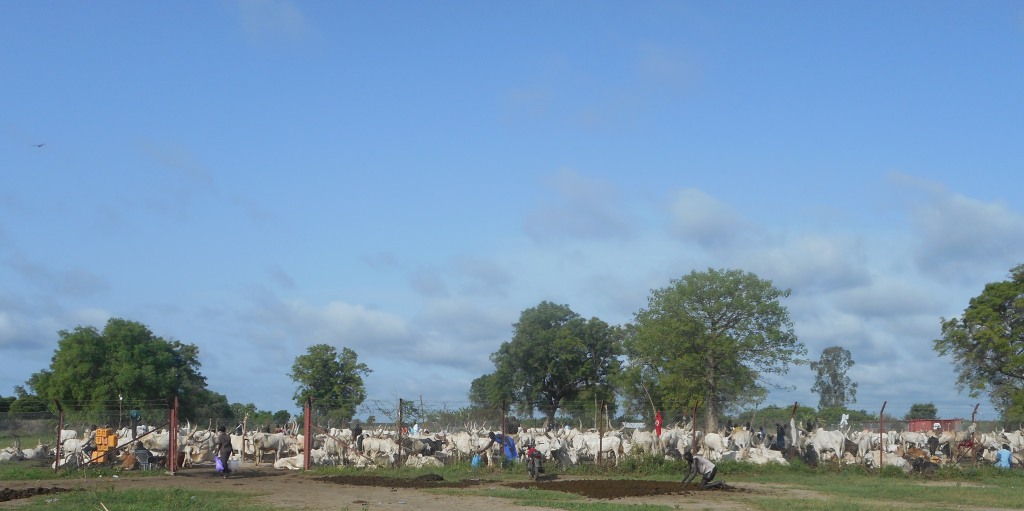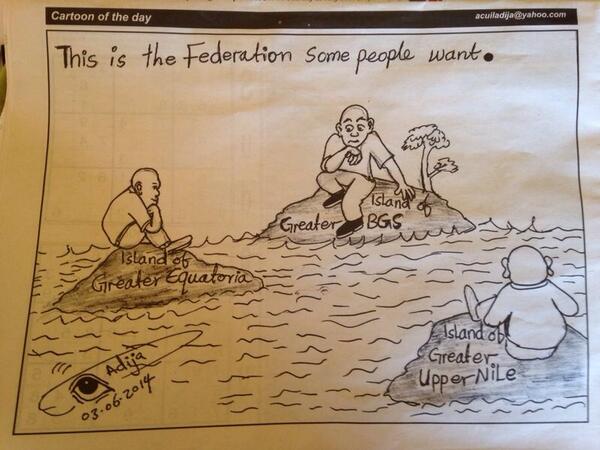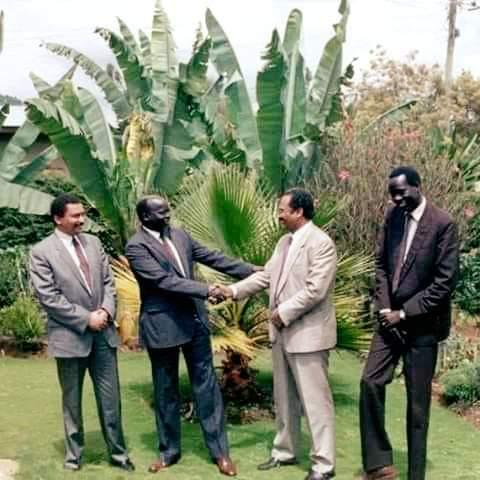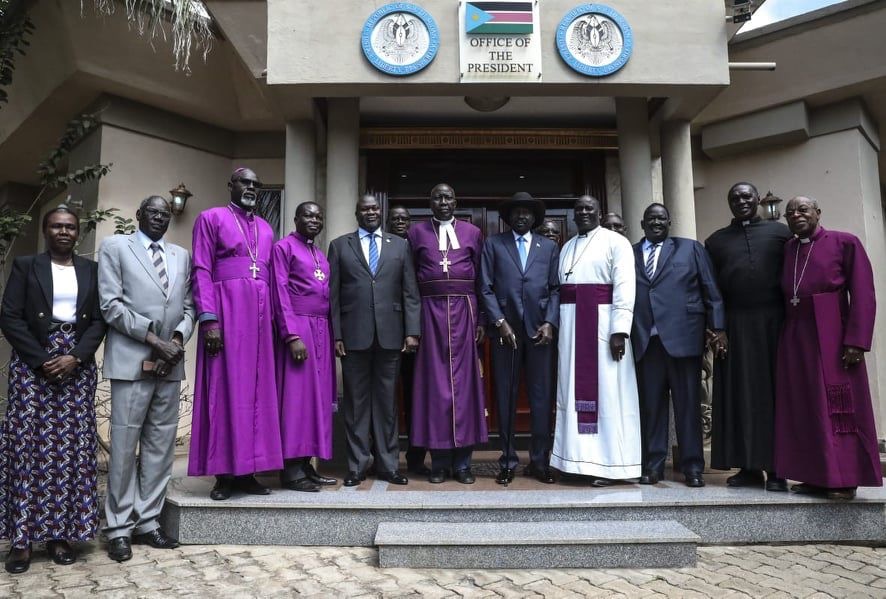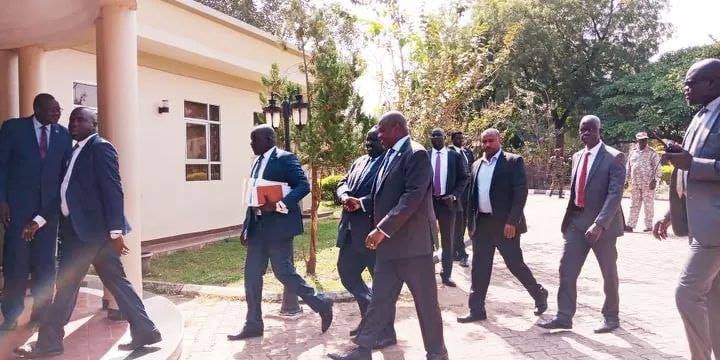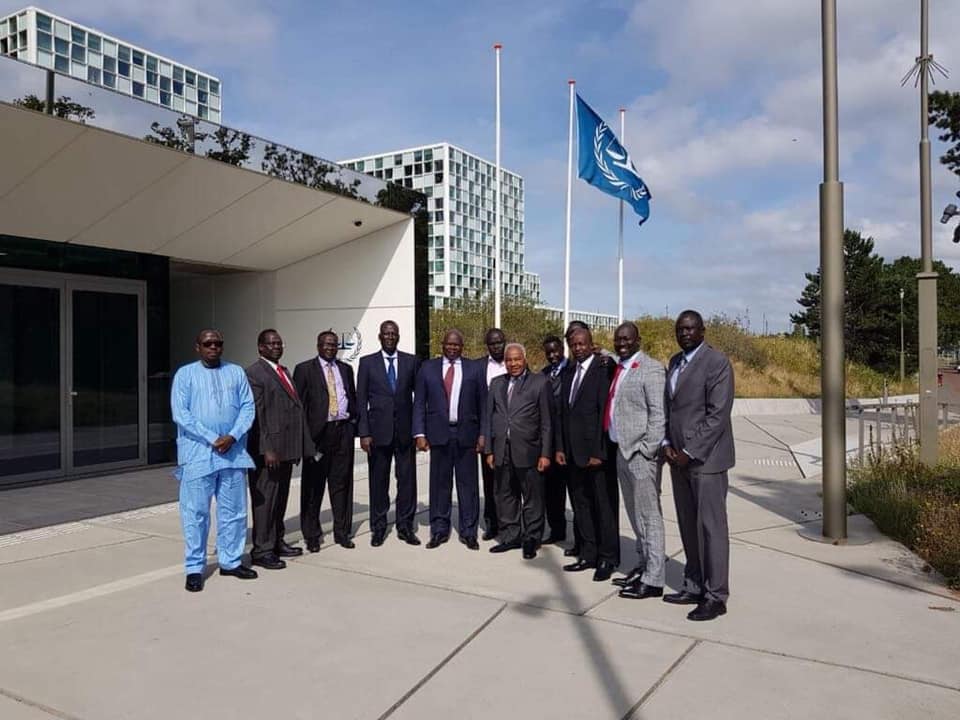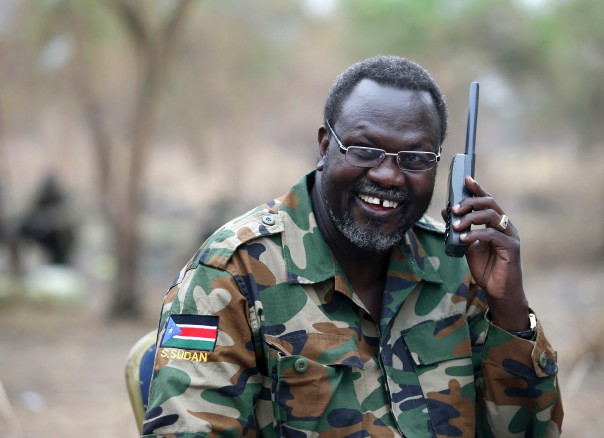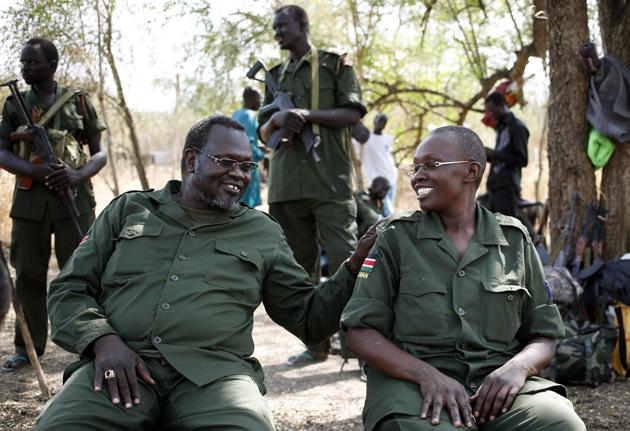Malith Alier, Scone, Australia
Sunday, 10 November, 2019 – PW
Day One
Nestled between mountain ranges to the north, east and far west is the city of Tamworth in New South Wales, Australia. It’s an important regional centre in the Federal Government electorate of New England. Tamworth is about three hundred and eighteen kilometres away from Queensland border. At June 2018 the population was estimated to be around 43,000 people. A climb on the Oxley Scenic lookout offered unforgettably breathtaking views over the city. The Oxley Lookout is a short walk from Tamworth Hotel next to Tamworth Train Station on Marius Street, New England Highway. On the second day of the incursion, I felt that the visit won’t be complete without travel to the famed Oxley Scenic Lookout.
From Scone, I caught the daily regional train heading to Tamworth at 1:38pm. As early as 9:00am before travel, I headed to the Scone Library to book a ticket on the transportnsw.info website. The two-way tickets cost under sixty Australian Dollars. The return ticket happened to be for the First Class as the Economy Class was fully booked.
At around 1:00pm, a friend from the USA called on messenger. I was seated in from of the patio of our residence just counting down to the train arrival. He started talking about America, his work and the war-ravaged South Sudan where we both come from. I regularly glanced on the wrist watch to make sure that I did not miss the only train to Tamworth on this fine Saturday. “Please allow me to go, I am going somewhere right now,” I requested. I picked my “be” bag and headed to the Scone Train Station. Coincidentally, we both (me and train), from different directions, arrived at the train station at the same time. What the timing, I told myself. I pressed the button and the door gaped open! My seat was number 44 on the Economy Class next to the First Class I will be riding on return leg.
The northern part of New South Wales is a truly amazing landscape! I continuously looked out of the windows: the vegetation, the hills, the valleys and the mountain ranges tell you everything about the work of nature on earth. Land utilization is another reason to keep looking out for on the journey. Farmers have fenced their land all the way along the road and beyond. The hill sides are dotted with buildings that unmistakably tell you that this is not a no-man’s land. More than people who have colonised the land through farming; is the well-known Australian Kangaroo in its various species. The well camouflaged Kangaroo all of a sudden is seen hopping away from the roadside. At times, the vigilant roo (short for kangaroo) is seen raised his head to listen or see what’s happening as the train approaches.
Day Two
Early in the morning I got up fresh and ready to explore the city to the limits. I went to the shared bathroom facility, brushed my teeth and took shower. Back in the room, I dressed and headed to a café on Peel Street where I ordered a hot chocolate and a traditional meat pie. I knew that the day was going to be hectic. Physical walk was expected to be the order of the day. I returned to my room one more time and grabbed my Canon digital IXUS 850 IS Camera which I bought from Harvey Norman in 2007. This camera is part of my story for more than 10 years now. It had captured hundreds of images including marriage photos for 2008.
I headed straight to Bicentennial Park close to Peel River. The entry to the park is aligned with statues of notable people who were and still part of the story of what has come to be known as the Country Music Capital of Australia! I took photos of the ones I like. I then proceeded to the footbridge across the River. I strolled across to the other side. Right on the bank, I looked around and saw nothing of particular interest. I saw a car park with two to four cars parked there by the owners who might have gone for a leisure walk. On the right-hand side was a patchy park of green and dry. With no motivation to go further, I made a U-turn across; back to the park where a gay pride show was in progress. The park was littered with gay pride colours – Rainbow Colours. A number of stalls was erected for shelter and display of items and objects. At one stall, were three greyhound dogs with the “adopt me badge” on them. They were held on leashes.
From here, I proceeded eastwards hoping to reach the limit of the sprawling CBD. I took two photos of emu and horse statues as I go along through the Park. The horse and man statue is the face of Bicentennial Park. Nearby was the stagnant water pool full of water ducks. The ducks of different colours ranged from small to large ones. I came to a vibrant playground at the east end which I later learned was completed in 2015. It cost $1.1 million to construct according to Tamworth Regional Council records. The playground features included; Netplex climbing play system, Smart Play Motion and Little City Oslo for toddlers and many more. I quickly gazed around the playground and moved on. I made about turn after Woolworths. I believed that there’s not much to proceed further. On the right was another playground name aerodrome. It is an oval shaped concrete and was not in use on the day.
At this time around after midday, I needed to quench my thirst and would be ready to enter any grocery on the next street. In a small Asian grocery, I purchased a basil seeds drink in a 350 ml bottle. I felt in love with the small store, the compact layout and the neatly filled shelves impressed a visitor who is keen shopper. It was in this shop I spent several minutes window shopping. Several Asian customers came in and went out often.
Facts about Tamworth
The original inhabitants of Tamworth are the Kamilaroi aboriginal people
John Oxley passed through the area in 1818, named the River that passes here Peel River after PM Robert Peel
First sheep station Established in 1831
First city to use street lighting in Australia in 1888
Country music capital of Australia – holds largest country music festival every year
Considered a National Equine capital because the number of equine events held here
In 2006, the Tamworth Reginal Counted voted 6-3 against resettlement of Sudanese refugees. Councillor James Treloar claimed the refugees were tuberculous and criminals. The decision was however, reversed one month on due to public outrage.
I premeditated to return to the store the following day to do more shopping here. On the way I passed by several huge car dealerships as I headed back to the Centrepoint Shopping Mall for lunch. But before that, I moved northwest a little. I headed to the Tamworth Power Station Museum. Google told me that it was close at the time but I was determined to view it inside or out whichever way. I walked in front of the Museum viewing outside displays and photos about the city and the station. The displays exactly take the visitors through the history of the city and the power station. It also gave the background of the people involved in the power engineering and generation. Finally, it tells you exactly that Tamworth was the first in the whole of Australia to use street lighting. It was time to let go.
As I entered the Shopping Mall, I saw an African shop, African Art and Craft. I peeped through collapsible transparent door and saw bright red African shirt covered in amazing patterns. I felt in love with it on instant. My favourite colour revolves around sheds of red hue! Since it was Sunday, I envisaged to return on Monday to have a look on this particular shirt and many more. The notice on the door however, told a different story, “sorry for missing you, we’re back on Tuesday.” That statement sealed my fate of not laying a hand on that little shirt comes Monday. I called it quit and proceeded and grabbed an eleven Dollar lunchbox in a take away café in the same Shopping Mall and headed to the YHA Hotel close to the railway station. My intention was to relax for a few hours before the next episode, ascension to Oxley scenic Lookout – a tourists hit for the city.
In the dining area of YHA, I started a conversation with a Zimbabwean man I saw at the premises the day I arrived. He introduced his name and I responded in the same manner. There was a lot more to talk about since anti-imperialist Robert Mugabe, who died in Singapore in September 2019, come from that country. “How is your country, Zimbabwe, these days I asked?” “My country is not that great anymore.” “I lived in South Africa for over 10 years before I came to Australia last year,” he explained.
We had a frank assessment of the three countries of Zimbabwe, South Africa and South Sudan. The topics discussed included refugees, xenophobia, political abuse including overstaying in power, and then war. Currently, war is raging in South Sudan as a result of unfulfilled promises after the end of 21-year old previous war in united Sudan. The ruling party, the SPLM began devouring itself from within in 2013. This happened two years into independence. The rival leaders, Salva Kiir and Riek Machar insist that they had what it takes to rule the country indefinitely! Under pressure from within and without, they negotiated a peace agreement in 2015 and formed a transitional government the following year. They resumed fighting within months starting in the capital for the second time.
There is no war in Zimbabwe as we speak but a liberation party, ZANU-PF, which ruled the country since independence in 1980 started to abuse citizens in politically motivated orgies. Things began to unravel in 2000 after the opposition mounted a strong challenge to Robert Mugabe’s iron fisted rule. The sparks flew and the opposition supporters were at the receiving end of Robert Gabriel Mugabe ire and vengeance. Hundreds of people were killed by ZANU-PF youth. Thousands fled the country to South Africa and other neighbouring countries. White farmers were killed or evicted from farms by War Veterans. This is the story of the Zimbabwean people under ZANU-PF and Mr. Mugabe.
Fleeing to South Africa didn’t help the Zimbabweans as they faced the unwelcome by citizens of the host country especially after staying for long. They’re and continued to be subjected to unforgivable and harsh xenophobic attacks in the former apartheid-ruled country.
After having read a chapter on “The Writer’s Idea Book” by Jack Heffron, I deemed it time to proceed to my last undertaking, going to the Scenic Lookout. I grabbed my Galaxy J8 and keyed in “Oxley Scenic Lookout.” The Lookout was three kilometres away from YHA. I followed the direction to White Street and towards the mountain ranges to the north. There was no longer paved footpath on White street so I walked on the grassed side of the road for safety reasons. Several vehicles wheezed by as I briskly walked along. After bypassing the last residential homes, I followed a goat track as I climbed the mountain. Then I came to the meandering road the track crossed. I looked up, right, and left. I stood still and thought for a moment. The goat track has become steep. I decided to walk on the roadside as there were no many traffic either way. At one point, I decided to change course and go back because I thought the journey was exhaustively tiresome. I was sweating profusely and I had to carry my woollen Huski on one hand. Half of my soul said no, stay the course!
The google map told me that the lookout was about 17 minutes’ walk away. Time ticked and I reached the apex of the Lookout! Here a good number of visitors was present. Cars were parked nearby. The tourists were taking photos or selfies for remembrance. I saw some couple looking at photos and laughed hysterically. At this point, with telephone back in the pocket, I switched on my little Canon to take the panoramic view of the city and surrounds below. I took at least three positions and made a quick review. It was amazing! I then sat on a handy seat provided by the Council for the comfort and rest of the thousand visitors year-round. I opened the bottle of Powerade diluted with water from the tap on the Lookout. I seeped the water two times. I took a third seep and thighed. This sight is not only amazing, it provided healing of some sorts to the mind and soul. Overviewing the magnificent city from above is a true refreshment of spirit! It was time for me now to descend back to the city. The sun was going down. As I prepare to descent, I saw a white Toyota car parked on the edge. A man was in the seat. On the embankment was a green peacock which I betted belonged to the man in the car. I thought it was majestic in presentation. I aimed and captured images of the cock.
I took a different route towards the city. The broken path meandered in north westerly direction. On descending, I had to move slowly to avoid potential slip or fall. The loose rocks can initiate slip and fall so, I thought. Hap, hap, hap I marched down the mount! The pine-like mountain trees looked lifeless. They have no green leaves on them. Their lack of water contents was apparent to the naked eye. The mountain trees are adapted to the conditions up here. Northern New South Wales has been experiencing dry weather conditions or drought for years now. The descent took about thirty minutes or so. Finally, the street sign told me where I was – Brisbane Street. White street entry, Brisbane street exit, amazing! I looked around to make sure that all was okay. I betted that buildings on the top end of Brisbane street were architecturally well designed. They are magnificent town houses owned and dwelt in by the well to do citizens. I chose a different road that joined Brisbane street at a Y junction. After all I wanted to explore as much of the city as possible before the sun sets. Certainly, it was my last day for the visit.
An arrow pointed to the direction of a botanic garden. I wanted to follow the direction but decided otherwise after walking a few metres. There was a school nearby, I walked past it. Then another school followed by a third school. A series of schools in the same neighbourhood! unexpectedly, I came to the railway line at Tamworth Train Station. There before me, was a giant overpass across the line to the station. I stepped on the overpass and crossed to the western side.
Yesterday on arrival, I got a glimpse of a mammoth building to the west. I decided not to forfeit visiting it before dusk. I walked through the Hands of Fame park at the crossroad of two streets. I briefly scanned over it across the road. It’s a little nice and neat park within the CBD. I then proceeded to the Bridge over the Peel River heading to West Tamworth. I peered a head to make sure that I was headed in the right direction. The erstwhile magnified building became smaller and smaller as I approached. I previously looked like it was a raised platform. I crossed the double bridge to what is known as West Tamworth. On the left-hand side after the bridge is Thrifty Caryard. The yard was filed with small cars meant for hire by the tourists. The next is Ibis Hotel. Ibis Hotel is located on the lower bank of the River. Apparently, the area is subject to flooding. This is why the back part of the building is on raised concrete posts to elevate it from flood level. I crossed the light controlled intersection of the two streets. The huge Anglican building was one block away from here but I decided to view the church on the second street ahead. I aimed my Canon and took three photos of the building at different angles. They looked impressive. They were of course taken across the street and I had to zoom in and out for maximum resolution. The yearn to view this western side of the River landmark was now satisfied.
However, I then had to travel a few more metres to have the full experience of this busy street. I looked a head and saw a giant Woolworth and Big W Shopping Centre post. Since it was wee hours on a public holiday, there was no need to go into the shops. I simply walked past and came to a busy corner. I saw a pub on the other side of the street. The next to the pub was “Devils’ Paradise!” I eventually reversed course here. A small sign in front of the entry to the Devils’ Paradise announced that, “We are Open, a discreet parking is at the rear!” I laughed about the apt naming and cogitated about it for a moment. “Are they married men and women coming to “The Paradise” or just bachelors and spinsters? Is it anybody above eighteen? How is it managed? Do they use drugs before indulgence? I let it get over my head altogether. These questions were just rhetorical ones at best. After everyone has their own choices.
I set my mind to the YHA accommodation. The sun was already down. The City lights have taken over! It was time to think about the rest of the evening including where to have dinner. Just metres away from the bridge, I looked in the night sky. I was instantly greeted by the sight of the flying foxes also scientifically known as Pteropus. The sight of the flying bats following the course of the River was not only amazing but also provided an opportunity to learn about their behaviour. We know that bats are nocturnal (active at night) animals. They’re also not classified as birds but mammals because they give birth to live young ones among others. Those are some of the few characteristics I learned in school many years back. I stood by the bridge to observe the spectacular sight of the moving bats for minutes. I leaned against the support rails and reached out and unzipped the small bandolier hanged across the shoulder. I took out the Canon. I initially, captured photos and then a video motion of the mammals. A cross the bridge; another guy was taking pictures and videos of the bats on his mobile phone. He seemed to have been out from work late and did necessarily need to spend a lot of time on it. Or perhaps it’s not new for him
I then crossed to the other side and continue watching for another ten minutes or more. Some “tired” bats so I thought, rested on the trees on the banks. Some little bats flew dangerously close to the moving traffic on the bridge. I thought they’re going to hit the cars. I watched the whole spectacle for over thirty minutes. Toward the end of the flight, the bats became smaller in size. I thought they’re the young and inexperienced ones flying at the rear.
At the Safari Club Bar and Grill, I sat on the table close to the door and waited for one minute or so. I rose up and went to the counter. “We’ll come to you,” one lady at the counter said. “Okay,” I said. I headed right back to the two-seater table. I guessed around the restaurant. I spotted neatly taxidermized heads of African springbok, eland and gemsbok hanged on the walls from the door to the very end. The Grill and Bar patrons were busy eating and drinking exotic beers and wines. South African beer, cider and wines specials were on display on canvass on the wall. I looked across to the other partitioned room but few people sat therein. I turned to the menu before the waiter arrived. The menu suggested that it’s one of the pricey fine dining outlets in town. Starters cost between AUD 18 and AUD 36. One can spend over hundred for a three-course dinner at Safari Club Bar and Grill. It could be more if you include choice wines or cocktails. Indeed, a seafood platter for 2 sells for AUD 120.
“Please let me have Game Meat Tempter, I told the waiter. The full description of the entrée was, “Mixed Slices of Crocodile and Kangaroo fillets, marinated in monkey gland sauce and chargrilled – served on mixed green salad.” With pen and paper on her hands, the waiter was about to record the order but before that, she said that they didn’t have crocodile meat on offer that evening. “let me confirm just to make sure,” she explained. She headed back to the kitchen. She returned with the same bad news. I then decided to have a taste of kangaroo meat as a starter. I took photos of the dish before me not knowing that the phone won’t retain them long. I felt partly disappointed because of the absence of the game croc meat in the combination after the dish.
Safari Club menu has a motto: “Take Your Tastebuds On.” So, if anyone wants to palate their tastebuds, they should try the fine dining outlet right in the heart of the CBD.
I left the Brisbane Street venue for a Chinese restaurant on Peel Street. Before, disappearing for good, I looked back to take photos of Safari Club frontage on the phone. The photos did disappear later altogether on phone memory.
After a nice dine in the Chinese restaurant, the lady gave me a chocolate sweet on the way out. I kept it until the following day. Taking caffeine late in the evening is a no, no to me – loss of sleep is the reason.
Back at YHA, I found the two Zimbabwean gentlemen seated at the same table as before I left for Oxley Lookout. I was introduced to James who was a nice-looking man perhaps in his late thirties or early forties. We embarked on discussing the same topic about Africa and its woes. The same familiar stories of Zimbabwe, South Africa and South Sudan resurfaced. This guy had no kind words for African leaders who overstay their welcome in leadership positions.
I told him that I keenly follow South African Daily Maverick stories. I said that the story of Grace Mugabe lashing Gabriele Angels with electric cord in Johannesburg in 2018 was a disturbing story. I pointed out that she should have been charged for her unruly conduct especially in a foreign country. Grace Mugabe was let off the hooks citing her diplomatic status. It was ridiculous. She entered South Africa not on that premise. She is also a native South African having been born there. James agreed with my views about the issue. He thought that “Gucci” Grace should have disciplined her sons who were misbehaving in South African wealthiest Sandon area of Joburg. I didn’t sit this time. We discussed the matters on my toes! It was coming to nine or ten o’clock and I really wanted to be in bed for the necessary rest from the long day.
Day Three
I looked at the analogue Elite Quartz on the bed side. The time shown was 7:30am. I went back to sleep for another hour or so before I started preparing for the 10:27am train departure. The Eastern Australian Day Time, AEDT, has what is known as Daylight Saving Time, DST. This practice is observed in New South Wales, Victoria, South Australia Tasmania and the Australian Capital Territory and Norfolk Island. Clocks are pushed forward, one hour on the first Sunday of October and vice versa on the first Sunday of April each year. Therefore, my reference to the time on unadjusted watch was incorrect. This later that morning cost me the planned shopping at cheap Aldi store in town.
Still unaware of the fallacious timing, I headed to the Centrepoint Shopping Mall for breakfast. At Jamaica Blue Café, I ordered muesli and English breakfast tea still unaware that there was no enough time to indulge in shopping at Aldi and Storm Riders stores! While waiting for the serve, I as usual, logged on to Facebook to see what was happening around or further afield. The unlocking procedure on the phone includes pressing the light on, swipe the screen and draw a pattern to fully unlock it for use. I momentarily noticed that time on the phone was twenty minutes to ten. I was also expected to check out at the HYA hostel by ten o’clock. The normal rules state that guests must check out at 10:00am. Failure to check out at the specified time meant that I would therefore be requested by the Hostel to pay late checkout fee about ten Dollars.
At this stage, I realised that I had to move quickly to at least do a couple of tasks before departure. Everything had to be done in a hurry! I took the breakfast as quickly as I could. By 9:55am, I was in the Hostel lobby. I collected my bag which was already packed and moved downstairs to the reception. I handed the set of keys to the receptionist who wished me a safe trip to wherever I was going. With just under 27 minutes to the departure, I resolved to omit Aldi shopping on the list. I headed to Storm Riders fashion store to buy a camp collection red bag I admired and promised to purchase the day before. Being a Labour Day public holiday in New South Wales, the store was scheduled to open for business from 10:00am to 2:00pm according to notice posted on the door. With just minutes to ten, I strolled by the nearest shops to kill time as I wait for the opening of the Storm Riders. One of the two shop attendants was seen securing the door to the side wall as I anxiously waited to enter. The moment arrived! I rushed in and asked the lady to prepare the bag for checkout. She picked it and went to the back store to remove the stuffing. She headed to the till and scanned the barcode. “Are you paying cash or card,” she politely asked. “Card,” I said. “Can I give you a bag?” she asked. “Yes please,” I said. A bag was a shopping bag for carrying the bag I bought.
Between Scone and Tamworth there are four stations: Murrurundi, Willow Tree, Quirindi, and Werris Creek. The regional train separates at Werris Creek, one part of two to three cars goes to Moree as the other goes to Armidale via Tamworth. On the return journey, I briefly disembarked from the train as the two parts amalgamated at Werris Creek. I learnt a short history about the place. The nearby Railway Monument displays it all! The Werris Creek Railway Station was opened in 1878 making the town, the first Railway town in Australia according to sources.
Ben Chifley, the 16th Australian Prime Minister was an ordinary engineman. A train engine driver is also called engineman. He served as Prime Minister, PM, from 1945-1949. Ben was born in Bathurst, New South Wales on 22 September 1885. He left high school and joined the state Railways, qualifying as an engine driver. He became an active member of trade union whose members become Labor Party members when they join politics. Ben was elected to parliament in 1928. He lost re-election bid in 1931 but remained in active politics nevertheless. In 1940 he was re-elected and by 1945 he became the Australian Labor Party Prime Minister after the death of John Curtin.
I took some photographs of stone monuments on display outside the Werris Creek Railway Museum. The two giant stones outside are a display about Ben Chifley and coal mining in the area.
I entered into the little Museum but stop short of exploring the displays. Time was too short to do so. The train from Moree has just arrived and has amalgamed in readiness to go to Sydney Central Station.
The train pulled to scone Station at 12:29pm. Scone is a town in the Hunter Region of New South Wales. It’s about 270 kilometres north of Sydney. Its population according to 2006 population census was 2,624. The town is well known for breeding thoroughbred racehorses. It’s the national headquarters of Stock Horse Society and is known as the Horse Capital of Australia.
I picked my bag and pulled out of the train. With the bag on the should and Storm Riders shopping bag on the hand, I proceeded to our residence on Susan street east of Scone Train Station. I was glad that the long weekend was well spent. This is why I love travel. You get to know new places deeper and will permanently have relationship for the rest of your life.
Myspacecreations.com.au/bicentennial-park-tamworth/
En.wikipedia.org/wiki/tamworth-new-south-wales










